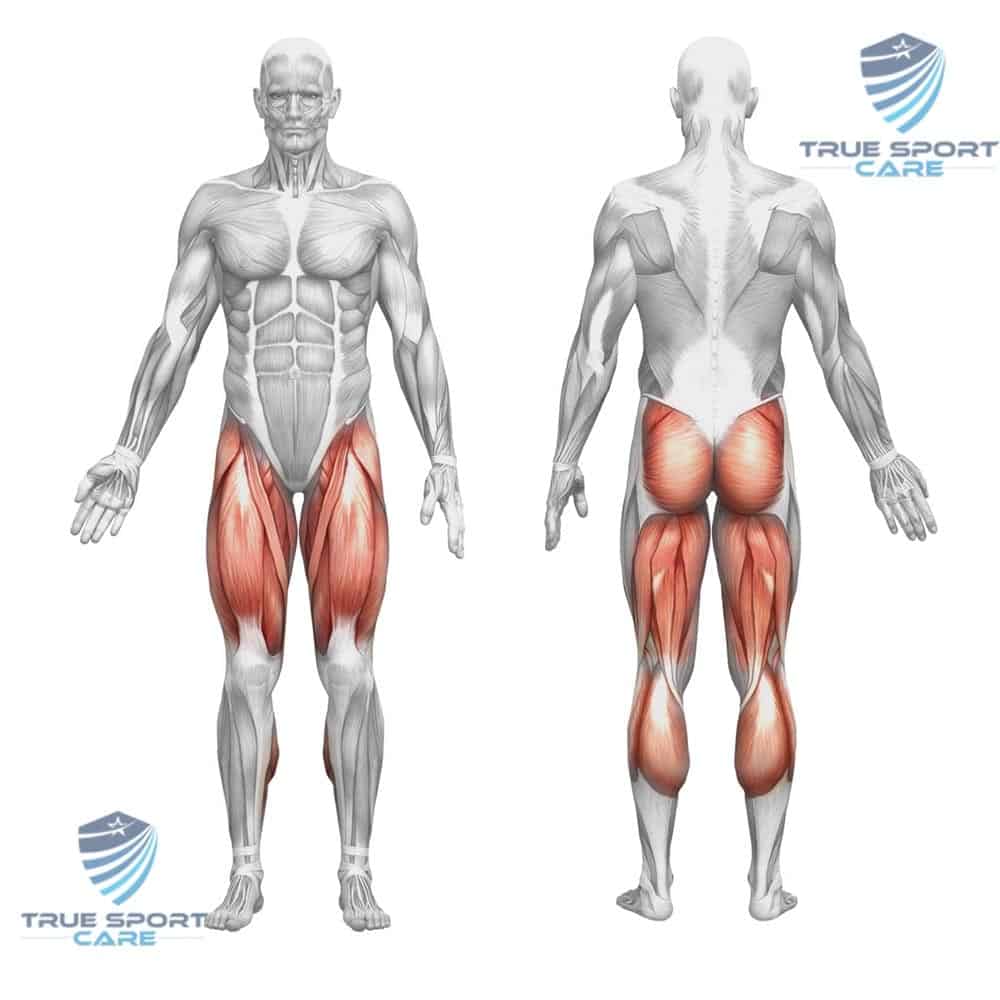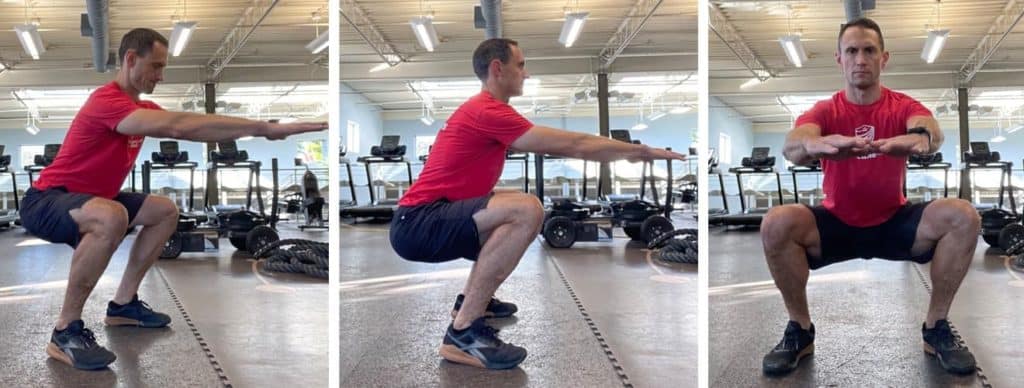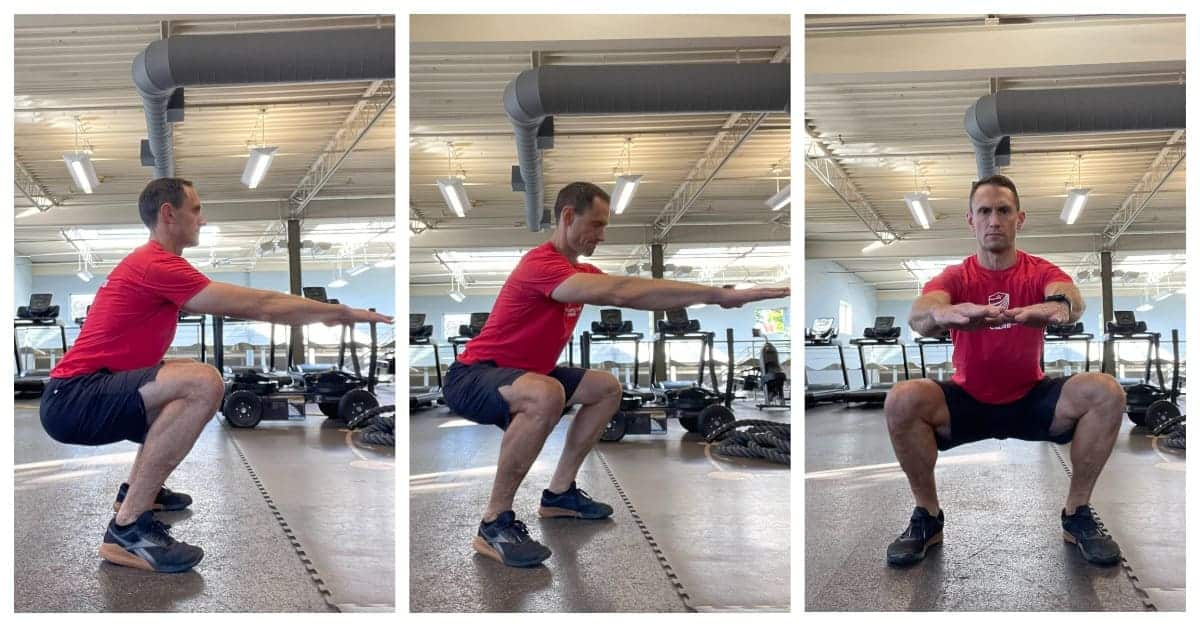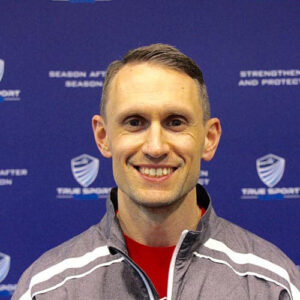by Daniel Holland, DC, CCSP, DACRB
The squat is one of the most basic human movements/functions that we utilize daily, quite often not realizing it. When we sit down in a chair, hopefully we don’t just plop our bodies down, but we slowly lower ourselves, or squat down.
So why is it when it comes to adding the squat in a strength training routine, or a rehab protocol in the office, we often hear moans and groans?
I frequently hear statements like “Oh it hurts my knees to squat” or “It’s going to hurt my lower back”. Usually these are false statements, only to be disproven with a few minutes of coaching and proper body movement.
Why is a squat an important movement pattern in any strength training routine?
That’s a great question that I often hear, and the answer is twofold. The squat is not only for building strength in the legs and body, but it also functions to increase joint mobility. So, when squatting you are working on strength and mobility at the same time!
What muscles do squats work?
The primary muscles that squat targets are the gluteus maximus, quadriceps, and hamstring muscles. However smaller muscles are also involved, which include the gluteus medius, gluteus minimus, iliopsoas, and the adductors to name a few.

What about mobility?
With squatting joint mobility improves in the joints of the lower extremity, these include the ankles, knees, and hips!
Where does one start to perform a squat correctly?
A quick online search yields various types of squats to perform. The air squat, back squat, front squat, overhead squat, box squat, wall squat, goblet squat, tempo squat, and split squat just to name a few! And what about foot positioning? Feet straight? Feet turned out? Feet hip width apart? Feet shoulder width apart?
Let’s take a deep breath and start with arguably the easiest squat, the air squat, and break it down step by step to learn how to perform this type of squat properly.

- Position of the feet. As for the positioning of the feet, this is a classic discussion among trainers and healthcare providers. In my opinion, it depends on the person as we are all built differently. When performing a squat, find a comfortable position for your feet. For me it’s just a little narrower than shoulder width with my feet slightly turned out.
- Start. Three main teaching points I use in the office with patients are:
- keep your feet flat on the ground,
- let your buttocks reach back,
- and drive your knees outward, which allows for full range of motion of the knees and a deeper squat.
- Finish. As you squat and reach the bottom (this could be full depth or maybe thighs parallel to the ground), use your legs and drive your body up, feeling the legs and glutes work!
I could write pages and pages on squatting, but to keep everyone’s interest I will conclude with some common questions or “mistakes” that people come across.
Main “Mistakes” to Avoid when Performing Squats
- Knee pain when squatting. While this can be multifactorial it could be something as simple as not driving your knee out for full range of motion, or maybe squatting too fast.
- Inability to keep your heels flat on the ground. This is usually due to a lack of ankle mobility. An easy fix is simply placing a thin object under your heels to “lift” the heel and allow for better range of motion during the squat.
- “My back hurts when I squat with weight”. I typically recommend activity modification, or in this case lighten the amount of weight and see if the pain continues.
So many thoughts on squatting, but in summary doing squats is great for you as long as you perform them correctly. In fact, after some convincing, my own 80-year-old mother has added squats to her workout routine. Any questions don’t hesitate and call the office or contact us to make an appointment!



